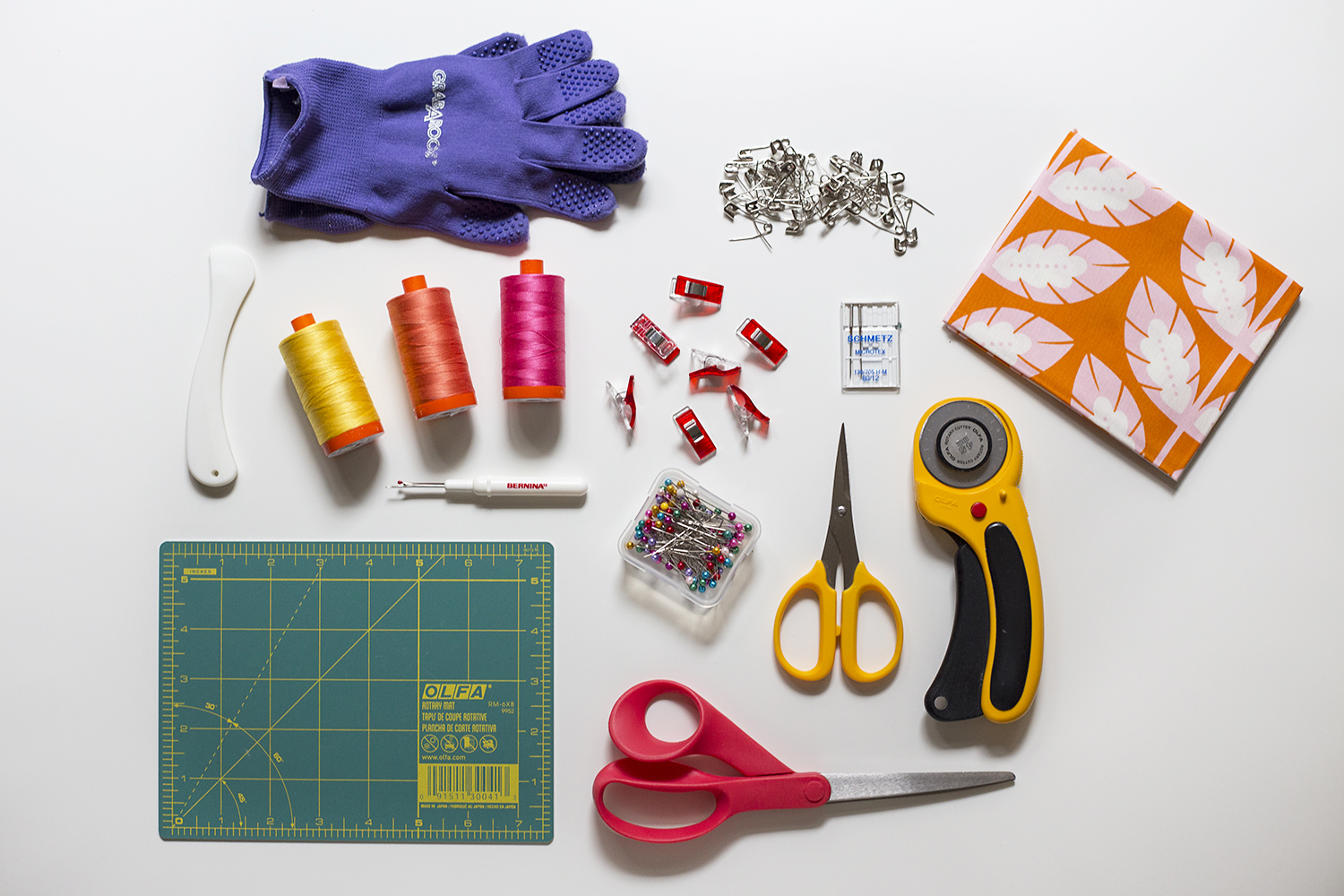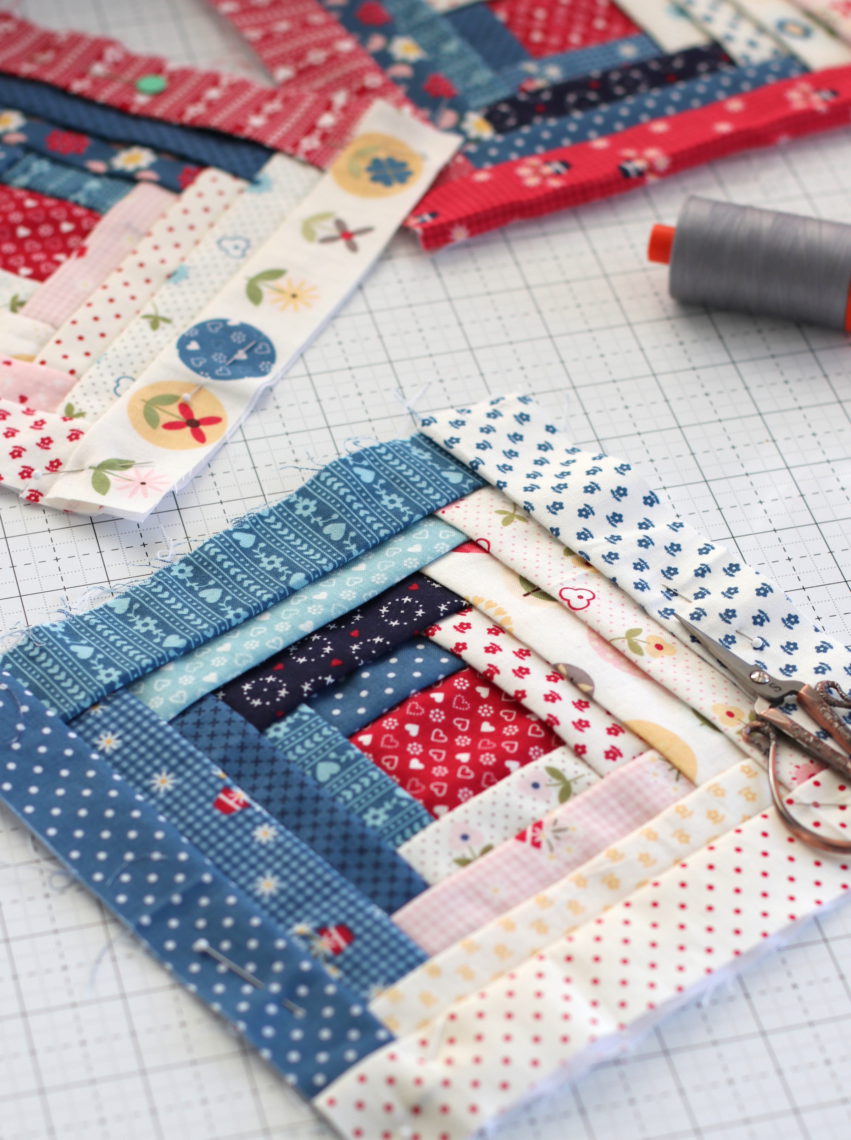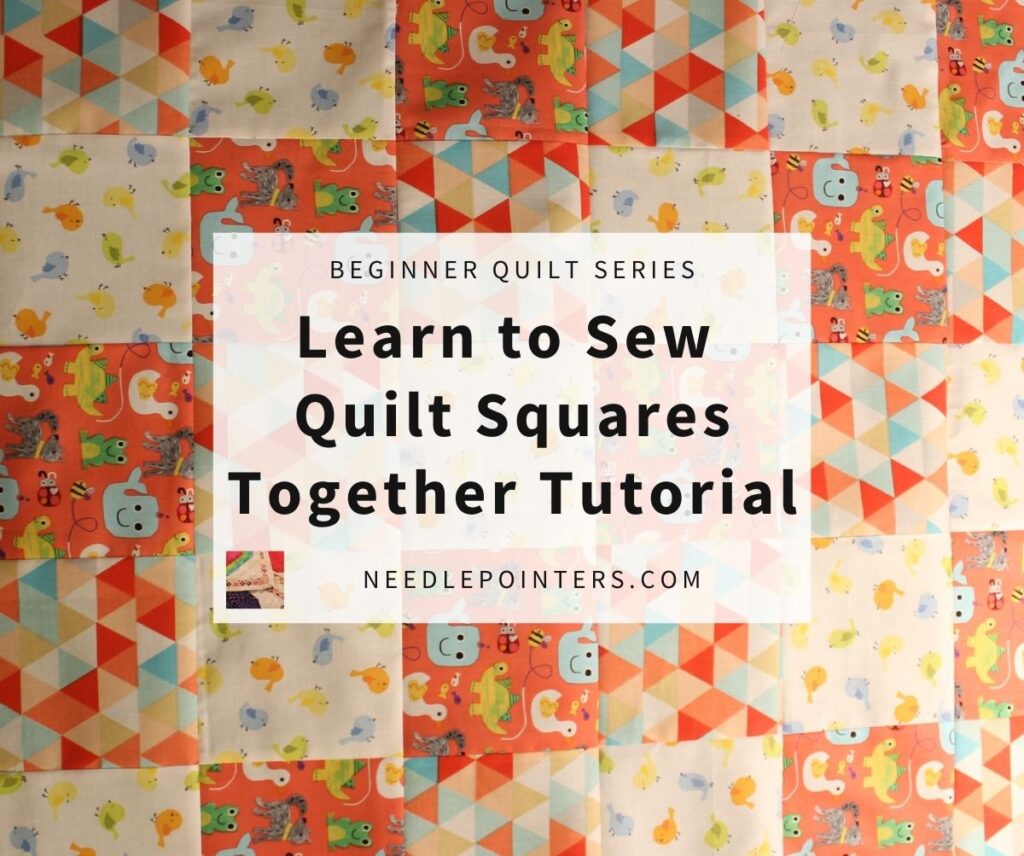Are you looking for a step-by-step guide on how to sew quilt blocks together? This article will provide you with the essential steps to sew quilt blocks together and create a stunning quilt. With this guide, you’ll be able to confidently create your own quilt with ease. So, let’s get started!
What You Will Need

- Quilt squares of the same size that you plan to sew together
- Thread in a color that will match the quilt squares
- Needle appropriate for the fabric you have chosen
- Scissors to cut the thread
- Iron and ironing board, to press seams and blocks flat
Now that you have all the supplies you need to sew together quilt squares, you are ready to begin.
Preparing the Quilt Blocks

Before sewing the quilt blocks together, all pieces must be pressed and trimmed. To press the quilt blocks, press each piece on the wrong side using a dry iron. To ensure the pieces are square, use a ruler and rotary cutter to trim away excess fabric.
Next, layer the quilt blocks by placing the right side of the quilt blocks together. Place the batting on top, followed by the backing fabric with the wrong side facing up. Pin in place to keep the layers from shifting while sewing.
Finally, mark the quilt blocks. Using tailor’s chalk, mark a line down the center of each block. This will help in the alignment of the quilt blocks when sewing.
Now the quilt blocks are prepared and ready for sewing.
Step-by-Step Instructions

Block Layout
Start by laying out the blocks in the desired pattern. Use pins to keep them in place. If the design includes cornerstones, they should be placed in each corner of the quilt.
Sewing the Blocks Together
Begin by sewing the blocks together in rows. Make sure that the seams match up and the blocks are lined up correctly. Sew the rows together, pressing the seams open or to one side.
Finishing the Edges
To finish the edges, add a border. Cut strips of fabric to the desired length and width and sew them onto the quilt. Trim any excess fabric and press the seams.
Quilt the layers together. Add batting and a backing fabric and pin or baste the layers together. Hand quilt or machine quilt the layers together.
Tips and Tricks
- Use a 1/4″ Seam Allowance – When sewing quilt blocks together, it’s important to use a consistent seam allowance of 1/4″. This will ensure that all the blocks are the same size and the quilt will come together properly.
- Press Seams Open – It’s important to press the seams open after they have been sewn. This will help to reduce bulk and create a flat quilt.
- Use the Right Needle – Make sure to use a sharp needle when sewing quilt blocks together. A dull needle can cause skipped stitches and uneven seams.
- Use Pins – Pinning the blocks together before sewing can help ensure that the blocks stay in place and the seams match up properly.
- Use a Walking Foot – A walking foot is an attachment for a sewing machine that helps to evenly feed the fabric through the machine. This can help to prevent puckering and uneven seams.
- Test Your Stitches – Before sewing the blocks together, it’s important to test the stitching on a scrap of fabric. This will help to ensure that the stitches look even and the seam allowance is correct.
Frequently Asked Questions
What type of fabric is best for a quilt?
-
Cotton: Cotton is the most popular choice for quilts because it is soft, durable and breathable. Cotton is available in a variety of weights, weaves, and patterns.
Linen: Linen is a lightweight, strong fabric that is great for quilts because it is durable and breathable. It is a bit more expensive than cotton, but it is a nice option for quilts.
Wool: Wool is a warm, lightweight fabric that is great for quilts. It is also quite durable and can be found in many different colors and patterns.
Silk: Silk is a luxurious fabric that is great for quilts. It is lightweight and breathable, as well as being very strong and durable.
Fleece: Fleece is a warm, soft fabric that is great for quilts. It is available in a variety of colors and patterns, and it is quite durable.
Flannel: Flannel is a lightweight, warm fabric that is great for quilts. It is available in a variety of patterns and colors, and it is quite durable.
What Types of Stitches Should I Use to Sew Quilt Blocks Together?
A running stitch is the most common type of stitch used to connect two pieces of fabric. It’s a simple stitch that’s easy to learn and can be used for a variety of quilting projects. For heavier fabrics, a backstitch is recommended. This stitch is stronger and more secure than a running stitch. An invisible stitch, such as a blind hem stitch or ladder stitch, can also be used. This stitch is ideal for joining two quilt blocks together so that the seams are invisible.
What Size Quilt Block Should I Use?
The size of your quilt block depends on the type of quilt you are making and the design. For a traditional quilt, a standard size of 6” x 6” or 8” x 8” is recommended. For an intricate quilt design, you can use blocks that range from 2” x 2” to 12” x 12” or larger. The size of your quilt block will also depend on the type and weight of fabric you are using.
What tools do I need to sew quilt blocks together?
- Sewing Machine: A sewing machine is a must-have for sewing quilt blocks together. You can choose from a manual, electronic, or computerized model depending on your needs and budget.
- Thread: Choose thread that is strong and durable and that matches the colors of your fabric. Cotton thread is best.
- Fabric Scissors: Fabric scissors are specially designed for cutting fabric. They are sharp, so be careful when using them.
- Seam Ripper: This is essential for removing unwanted stitches. It is a must-have tool when sewing quilt blocks together.
- Pins: Pins are used to hold the fabric in place while you sew. Use a sharp pin to avoid snagging the fabric.
- Iron and Ironing Board: Ironing is important for getting a crisp and clean look when sewing quilt blocks together. An iron and ironing board are essential for this.
How do I determine the correct pattern for the quilt blocks?
- Plan Ahead: Before beginning to sew the quilt blocks together, it is important to plan out the pattern for the quilt. Decide on the size of each block, the number of blocks and their arrangement. It is also important to consider the fabric that will be used for the quilt.
- Research Patterns: There are many quilt patterns available online and in quilting magazines that may provide inspiration. It is also possible to create a unique quilt pattern using the blocks that have already been planned out.
- Draw out the Pattern: Once a pattern has been chosen, it is important to draw out the pattern on paper. This will help to create a visual for the quilt and make it easier to determine the correct arrangement for the blocks.
- Layout Blocks: After the pattern has been drawn out, the blocks should be laid out on a flat surface. This will help to determine the correct placement for each block and the best way to sew them together.
Conclusion
Whether you’re a beginner or an experienced quilter, following this step-by-step guide will help you create beautiful quilt blocks. With the right tools and techniques, you’ll be able to sew quilt blocks together quickly and easily.






